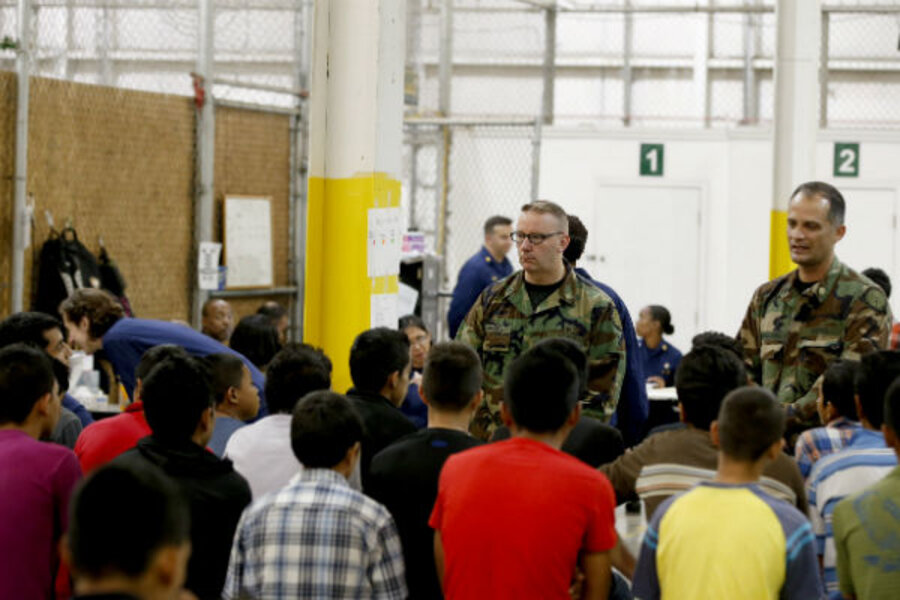Ensuring the safety of child migrants to the US
Loading...
The federal government has resumed checking the fingerprints of people other than parents who step forward to care for migrant children detained at the border amid concern by immigrant advocates that skipping the screening could put children at risk.
Kenneth Wolfe, a spokesman for the Administration for Children and Families, said the agency overseeing the shelter program for migrant youth has gone back to a previous policy of only exempting parents and legal guardians from having their fingerprints taken. No child was harmed by the more lax fingerprint policy, Mr. Wolfe said.
The number of unaccompanied Central American children apprehended at the border with Mexico has surged in recent weeks and could reach 90,000 this year. To speed children through shelters and free up bed space, officials had stopped running fingerprint checks against criminal databases for parents and other sponsors who offered to care for them, immigrant advocates said.
Until last year, advocates said officials had checked the fingerprints of all sponsors, including parents.
"Any time you are reducing the requirements, that is a concern," said Kimi Jackson, director of the South Texas Pro Bono Asylum Representation Project, which offers know-your-rights presentations to children in detention. "There are people who will sponsor kids out in order to use them for things that are not in their best interest."
Immigrant advocates say rising gang violence and threats have driven the children to leave their countries and trek across Mexico to reach the United States. Since last month, the Obama administration has opened temporary shelters on military bases to help care for the children until they can be reunited with a sponsor, preferably a parent or close adult relative.
Most of the children are reunited with family, according to Wolfe's agency, which on Thursday started a bilingual hotline for parents trying to find out if their children are in custody. The toll-free hotline is 1-800-203-7001.
Advocates say the government faces a daunting task of balancing speed and safety when releasing the children, many who are fleeing violent crime back home, to relatives or friends they haven't seen in years.
The average stay of a migrant child in a shelter is now near 35 days. It was 61 days between 2008 and 2010 in a study of 14,000 children by the Vera Institute of Justice.
For years, advocates pushed for a quicker release so children could be reunited with family. While they don't want the children to be unnecessarily detained, advocates now worry they aren't getting vital social or legal services because they are being funneled through the system so quickly.
Advocates also fear children might not confide in case workers about the dangers they face if they've only known them a short time before being released.
Kimberly Haynes, director for children's services at Lutheran Immigration and Refugee Service, said the government says it is going to have contractors follow up with children who are released to their parents because they are expected to remain in federal custody only about a week. But she said it's easy to lose track of them.
"We know of several kids who have disappeared before post follow-up services was able to be put into place," she said.
Wendy Young, president of Washington-based Kids in Need of Defense, said it is hard to get children legal services when their shelter stay is so fleeting, and the rising influx means fewer are getting lawyers, which hurts their chances of fighting deportation.







